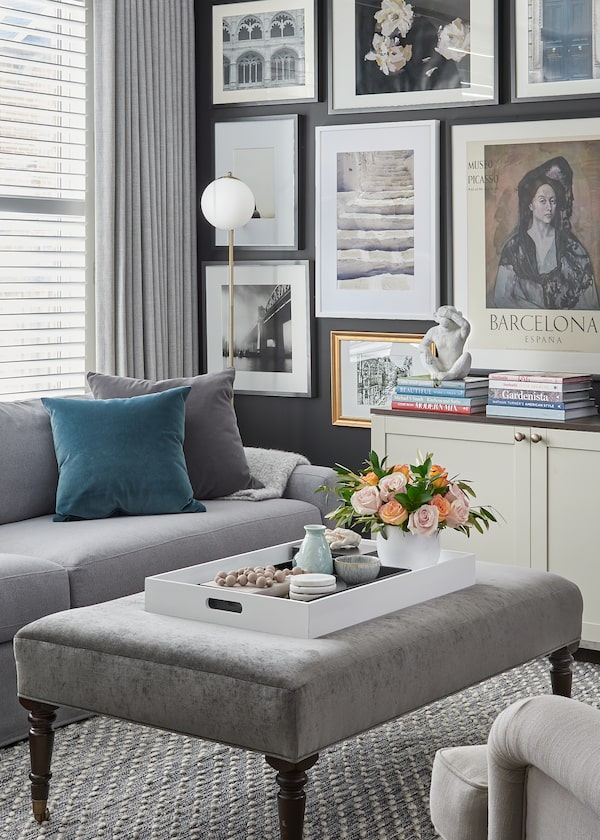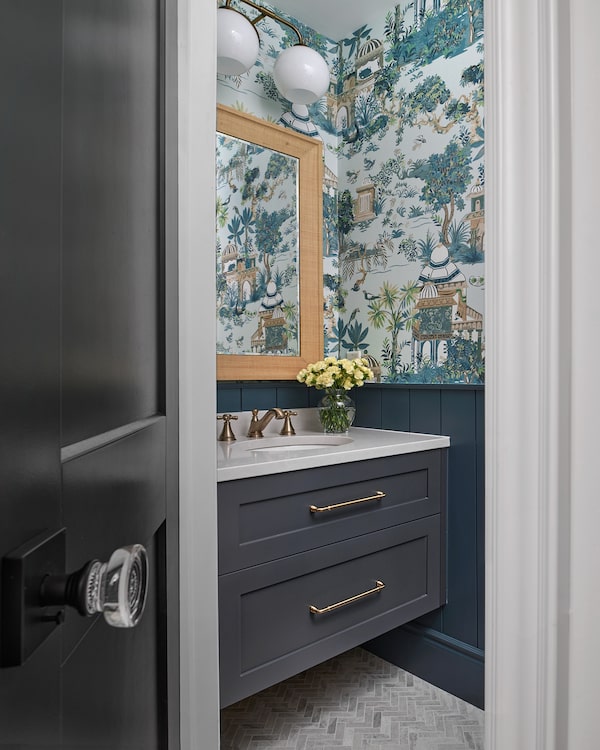
A project by designer Vanessa Francis.Stephani Buchman/Supplied
On the ever-popular topic of home renovations, Canadians are downsizing – at least, in terms of their budgets. The fifth annual HomeStars Reno Report revealed that homeowners spent an average of $12,300 in 2023 on renovations, and this number is expected to fall by more than $2,000 in 2024.
Vanessa Francis, a Milton, Ont.-based designer, says concerns about the economy and higher interest rates have shifted homeowners’ focus. “New client inquiries have slowed a bit,” she says. The clients who are planning to go ahead have “built equity and are ready to renovate with that in mind.”
The Globe asked five experts in home-related fields, from real estate to design and sustainability, how Canadians could maximize a $10,000 spend on their homes this year.
The Real Estate Expert
If your home is 15 years or older, it’s especially important to spend a minimum of $10,000 in upkeep a year, says Dawn Dauphinee, a licensed realtor and co-owner of Domus Realty in Halifax. She qualifies renovations as falling under either a “function” or “fashion” category.
“It’s way more fun to pay for pretty things than to pay for maintenance or efficiency items,” she says. “But ultimately, a house that isn’t maintained shows poorly even if it has some trendy bells and whistles.”
Roof and siding repairs, new eavestroughs, decks, fences and tree trimming are some of the items at the top of Dauphinee’s recommended upgrade list for a home’s exterior – especially as extreme weather events occur across the country. A new driveway is another practical upgrade with the added benefit of improving a home’s curb appeal.
Inside the home, Dauphinee suggests installing a sump pump, upgrading appliances or painting to get the most bang for your buck. A mini facelift to a bathroom or kitchen is always worthwhile, she says (see below for more tips from our design experts), as is installing new flooring in targeted areas.
The Interiors Expert

Bathroom project by Vanessa Francis.Stephani Buchman/Supplied
Layering walls with panel moulding, shiplap, or tongue-and-groove adds character, especially in newer houses and condos, according to designer Vanessa Francis of Vanessa Francis Design. “You can certainly install these decorative treatments yourself and the cost for the supplies is relatively low,” she says. To up the wow factor, Francis suggests hanging wallpaper above wainscoting or applied panels. Installing moulding yourself could save as much as $2,000, depending on the size of the room. Be sure to watch some instructional videos online, and have a laser level and tools to cut the moulding at an angle on hand.
If a bathroom refresh is the dream, a few cosmetic changes will go a long way. As long as the vanity is in good condition and has storage, it’s worthwhile to consider changing the surface to something more luxe. “You could see if a local counter fabricator has an offcut,” Francis says – a classic decorator trick for acquiring a higher-end piece of marble or stone for less.
“A mirror from a vintage store, and a new faucet and wall sconces will also make a dated bathroom feel new,” she says. If replacing the current floor tiles doesn’t fit the budget, consider using specialty paint to create a trendy checkerboard pattern, or apply peel-and-stick tiles over the existing ones.
Finally, Francis suggests spending on meaningful art and quality framing to create a gallery wall: “It doesn’t cost much but has such an impact in a living room or going up the stairs.”
The Sustainability Expert
“I would spend every penny on airtightness,” says Bettina Hoar, chair of Sustainable Buildings Canada and founder of Sage Living, a Toronto-based sustainability consultancy. “ ‘Airtight’ doesn’t mean you can’t breathe; it simply means you are controlling the air so that it’s brought in purposefully, rather than finding its way in.”
An easy do-it-yourself way to check for airtightness is to move around your home with a candle, she says. If it flickers, you’ve probably got a draft. Having a certified energy assessment is another inexpensive way to pinpoint your home’s inefficiencies and help discern which improvements are worth your reno budget.
Recommended remedies include updating old or broken windows, replacing caulking around windows and doors, beefing up attic insulation and checking that dryer vents are well sealed.
Hoar says that depending on government regulations, the next several years could see homeowners having to report energy use – and pay a penalty if consumption is over the limit for a dwelling of its size. “Right now, in Toronto, that’s only the case for buildings above 50,000 square feet, but in order for Canada to meet its aggressive carbon goals, we’ll have to renovate every existing building eventually,” she says.
We still live in a heating-dominated climate, she points out, and electric sources of heating and cooling will become the norm. If you’ve got a central air system that’s nearing the end of its life, Hoar suggests converting it to a heat pump, which provides both hot and cold air despite the name.
The Kitchen Expert
The green kitchen is a refresh completed by Jack Creasy where he kept the existing cabinets, counter and backsplash and used paint, new hardware and a new faucet to transform the space.Patrick Biller/Supplied
There’s value in hiring a professional, even for a budget-conscious reno, says Jack Creasy, principal and creative director of Toronto’s Jack Creasy Design.
In one recent project, Creasy – who’s known for his standout kitchens but also does full-home design – assessed that the cabinetry, counters and backsplash were in good condition and worth keeping. “People think designers are expensive but, in many cases, we can steer the project and ensure the spending aligns with the desired outcome,” he says.
After deciding what to maintain, Creasy was able to direct the homeowners to spend on a striking two-tone paint treatment for upper and lower cabinets, elegant satin brass hardware and a complementary satin brass faucet. “These minor alterations revitalized the space,” he says. “Think of hardware, plumbing fixtures and lighting as the jewellery of the kitchen. You can be wearing the same black dress but switch out the accessories and you’ve got a different look.”
He also suggests prioritizing key areas of the kitchen and investing where it counts. By replacing the kitchen’s centrepiece – the island – with a new permanent custom island or even a freestanding island or table sourced at a vintage or antique store, you can create a new focal point, and the impression that you’ve refreshed the entire room.
The Landscape Expert
Out in the garden, invest in changes with both a visual and climate-friendly impact, says landscape designer Erin Renwick, owner of Victoria-based Greenspace Designs.
The smartest place to start is with the lawn: “Instead of wasting water or living with a brown lawn, try creating a drought-tolerant native grass and wildflower meadow,” Renwick says. Planting by seed is a cost-effective way to achieve this look even for a large area. From an aesthetic perspective, your garden meadow will flower in stages throughout spring and summer and provide an appealing natural habitat for birds and pollinators.
Renwick’s other suggestions include: planting a small grove of native trees to help cool your home; installing rain barrels or cisterns to catch your rainwater for the irrigation of garden beds or potted plants; and building raised garden beds on a patch of lawn or even unused driveway or patio space.
“If you’ve got a spot that gets six to eight hours of sunlight per day, growing your own organic vegetables is fun and rewarding,” she says. “Your grocery bills go down during growing season, and it’s a wonderful educational tool for kids.”